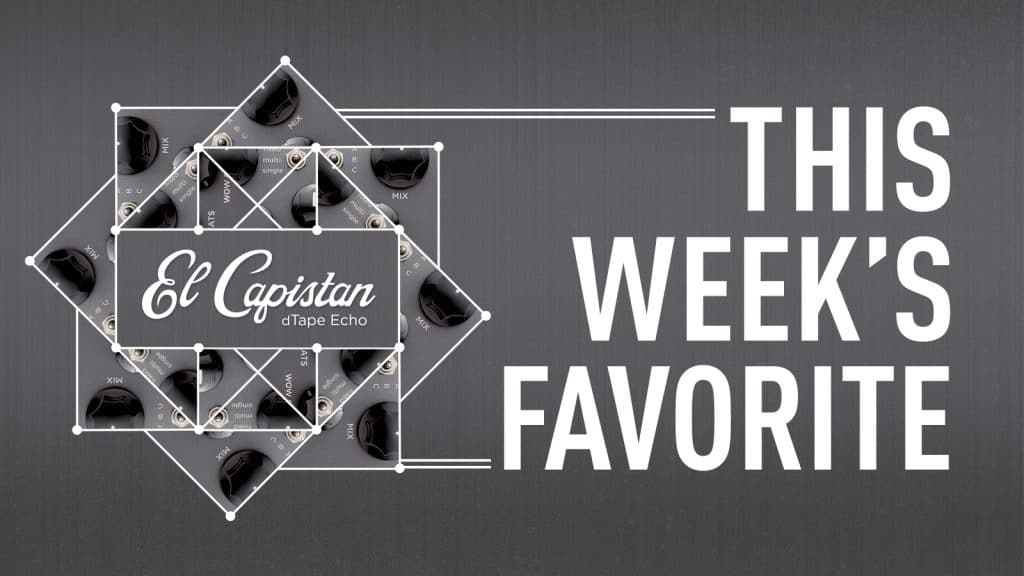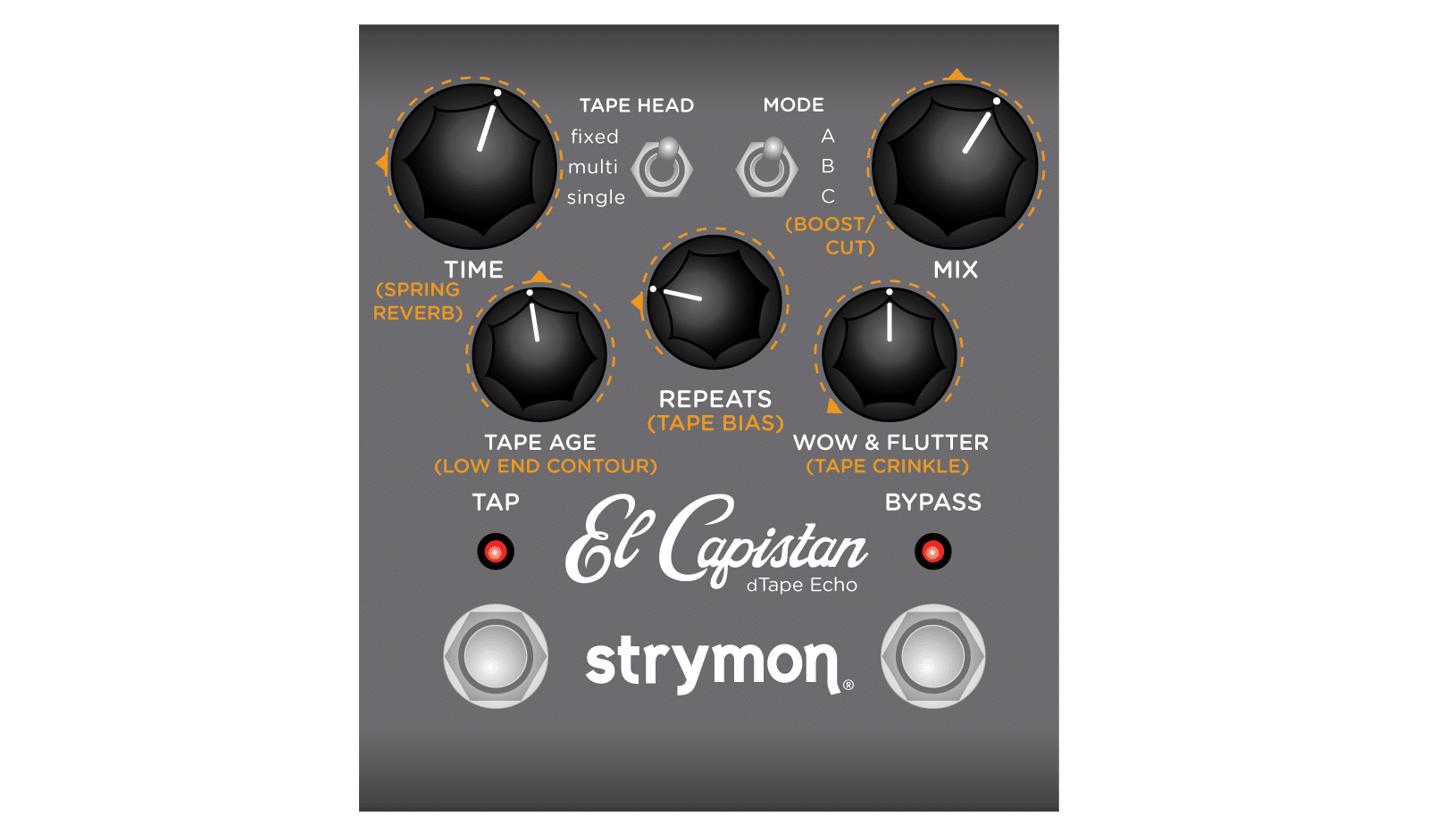
TimeLine Digital Delay Machine Video Presets
Some of you have asked us for the presets used in the TimeLine – Digital Delay Machine audio clips video, and at long last, here they
Free US Shipping On Orders Over $49
Easy 30-Day Returns
Financing Available Through ![]()

Slapback delay (or slapback echo) is an effect that works beautifully with guitars and vocals, and can also be used on drums and other instruments. The delay may be synced (being a noticeable part of the rhythm structure) or not. Typically, the delayed signal is mixed prominently, often at or near the same level as the dry signal. A short delay time is used (somewhere very roughly in the 50ms-200ms range, ymmv) with a very low feedback setting (often only a single repeat). A classic example of slapback delay can be heard throughout Elvis Presley’s 1956 recording of Junior Parker’s “Mystery Train.” The main guitar riff played by Scotty Moore features the effect, achieved by using two tape machines.
Rockabilly and classic country recordings may contain many of the most recognizable examples of the slapback delay effect, but the effect has been used through the years on countless popular recordings in many musical styles, and is still popular today. While early recordings created slapback delay by using two tape machines, soon numerous dedicated delay effect devices were invented that could produce the effect. Of course, many of the early delay units were tape delays, and in the example below, El Capistan has been used to create a slapback delay. The demo was played in sync with the delay, and the delay signal was mixed was pretty loud, so the delayed notes are nearly indistinguishable from the dry notes.
Mono version:
Stereo version:
You can see the El Capistan settings in the image below.

Repeats are turned down pretty low so you really only clearly hear one repeat, and the delayed signal is mixed loud. In fact, the delayed signal is mixed at more than 50%, but the Tape Age setting mellows the delay signal a bit, balancing at about 50/50 to my ear. (You can increase the Tape Age setting for a darker delayed sound.) The first example recording was made with El Capistan connected in mono. If you run it in stereo, you may notice the delay signal jumping out a bit more, and therefore you may want to mix in more dry signal. The Wow & Flutter knob is set at 12 o’clock, so if you let some notes sustain you’ll notice a bit of a chorusing effect. The Tape Head switch is in the Fixed position, so the Time knob varies the tape speed while the playback head is fixed in position. The Mode switch is in the A position, meaning we’re running the tape at double speed so that we can get some nice short delay times.
Those of you reading this who are familiar with El Capistan probably know that its front panel knobs have secondary functions that can be accessed by holding the tap and bypass switches simultaneously. As you’ll see below, the touch of spring reverb you may have noticed in the example was not merely a product of your imagination.

Spring Reverb Mix = 9 o’clock
Low End Contour = 12 o’clock
Tape Bias = 9 o’clock (perfectly biased)
Boost/Cut = 0 (12 o’clock)
Tape Crinkle = minimum
To make this effect sound like an older machine, possibly more reminiscent of an oil can delay unit, you might enjoy experimenting with turning the Low End Contour up (clockwise), and increasing the Tape Age a bit more.
In addition to El Capistan, you can also get fantastic warm tape slapback with the Deco Tape Saturation and Doubletracker Delay Pedal. TimeLine can also deliver excellent tape-style slapback with its dTape delay machine, and for some slapback with that classic analog bucket delay sound, Brigadier has you covered.
Post a video or clip online playing this preset, and please share by tagging #strymonpreset. Are there other preset/favorite types that you’d like to see in upcoming blog posts? Let us know what you think. Thanks!
Subscribe to our newsletter to be the first to hear about new Strymon products, artist features, and behind the scenes content!

Some of you have asked us for the presets used in the TimeLine – Digital Delay Machine audio clips video, and at long last, here they

You’ve heard of tape delays, bucket brigade delays, and digital delays. Maybe you’ve also heard of oil can delays…or maybe not! Oil can delay? Yup.

I just put together a quick demo of our Brigadier dBucket Delay and blueSky Reverberator together. We start off with a medium vintage-style delay with
3 Responses
Please, can you do the same with Volante?
I’ll share your request with the team! 🙂
Thank you!